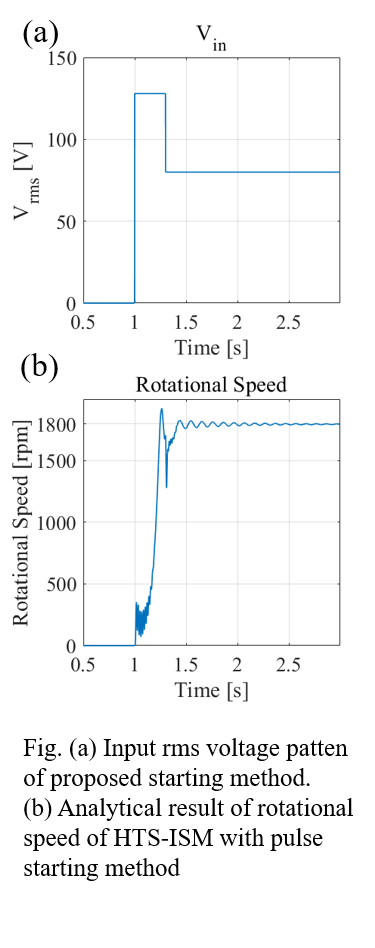AP5-4
Novel improvement method of starting characteristics in high-temperature superconducting induction/synchronous motors
Dec.2 10:10-10:30 (Tokyo Time)
Kyoto University, Japan1
Our research group has developed a High Temperature Superconducting Induction/Synchronous Motor (HTS-ISM) for next-generation transportation equipment. It was clarified based on the experimental and the analytical studies that the fabricated HTS-ISM possesses not only the excellent steady performances such as high torque density, high efficiency, but also the novel transient characteristics such as autonomous stability, hysteretic rotating characteristics. In order to start the HTS-ISM, however, it is necessary to break the magnetic shield of the HTS cage winding loop and interlink the magnetic flux. Since the starting current for the above process is much larger than the driving current, its starting time needs to be as short as possible.
In this study, we proposed a new starting method of the HTS-ISM. Input rms voltage was changed as single square pulse wave while starting and afterwards kept stable at constant value as shown in Fig. (a). This method was examined with model-based analysis for 20 kW class prototype HTS-ISM, which consists of BSCCO rotor and copper stator. As shown in Fig. (b), proposed method successfully started HTS-ISM and drove it at commanded speed (= 1800 rpm) under fixed frequency (60 Hz) and 10 kW load (= half load) conditions, applying high voltage less than 0.5 s. From these results, the proposed method is practical and effective because of its simple control and possibility of fast acceleration. The analysis details, further results and discussion will be reported at the conference.
Keywords: HTS-ISM, Starting method of motor
